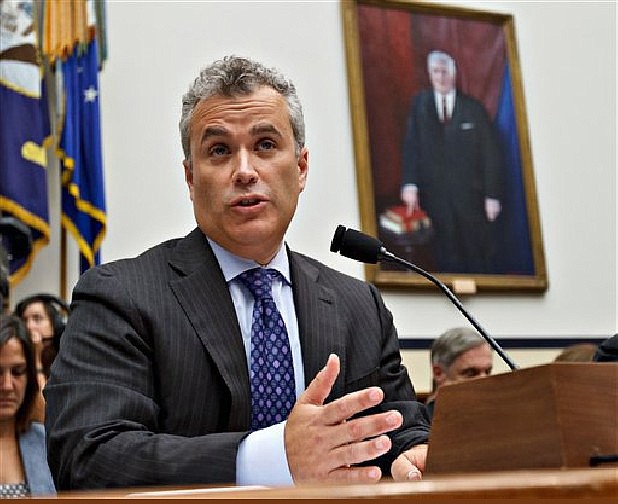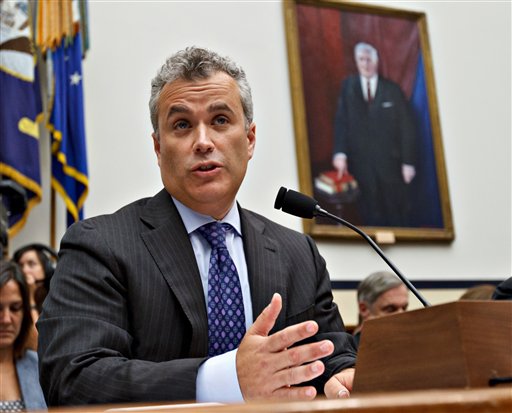WASHINGTON - Nearly a month into a dysfunctional health care rollout, Obama administration officials said Friday they've found dozens of website problems that need fixing and tapped a private company to take the lead. They said most of the problems will be fixed by the end of November.
Jeffrey Zients, a management consultant brought in by the White House to assess the extent of problems with the HealthCare.gov site, told reporters his review found issues across the entire system, which is made up of layers of components interacting in real time with consumers, government agencies and insurance company computers.
It will take a lot of work, but "HealthCare.gov is fixable," said Zients. The vast majority of the issues will be resolved by the end of November, he asserted, and there will be many fewer errors. He stopped short of saying the problems will go away completely.
The administration also said it is promoting one of the website contractors, Quality Software Systems, Inc., to take on the role of "general contractor" shepherding the fixes. QSSI was responsible for two components of the website, a major linchpin that works relatively well, and an accounts registration feature that froze and caused many of the initial problems.
HealthCare.gov was supposed to be the online portal for uninsured Americans to get coverage under President Barack Obama's health care law. Touted as the equivalent of Amazon.com for health insurance, it became a huge bottleneck immediately upon launch Oct. 1. The flop turned into an embarrassment for Obama and will likely end up as a case study of how government technology programs can go awry.
The briefing from Zients came a day after executives of QSSI and the other major contractor, CGI Federal, told Congress that the government didn't fully test the system and ordered up last-minute changes that contributed to clogging the system. Next week, Health and Human Services Secretary Kathleen Sebelius is scheduled to testify.
Zients gave some new details about the extent of the problems, but administration officials are still refusing to release any numbers on how many people have successfully enrolled. Although 700,000 have applied for coverage through the new online markets, it's believed only a fraction of that number actually managed to sign up. Prior to the website going live, an administration estimate projected nearly 500,000 people would sign up in October alone.
The marketplaces are the gateway to obtaining health insurance under the new health care law, which requires most Americans to have coverage by Jan. 1. Middle-class people who don't have insurance on the job can purchase a private plan with new tax credits to make the premiums more affordable. Low-income people will be steered to an expanded version of Medicaid in states that agree to extend the safety net program.
The federal government is running the insurance markets or taking the lead in 36 states. The rest were set up by states themselves.
Zients said almost daily fixes are already having an impact. For example, over 90 percent of users can now complete one of the first steps, creating an account.
But the application process, which involves submitting and verifying personal information and income details, remains "volatile," he said. At one point, as few as one-third of users were getting through that part.
Zients said there are two big categories of problems. Performance issues involve the speed and reliability of the website. Functional issues are bugs that keep the software from working as intended. He said the government has a "punch list" of needed fixes that add up to dozens in each broad category.
Near the top of the list: insurers are getting enrollments with incomplete, incorrect or duplicative information.
Until now, officials at the federal government's Centers for Medicare and Medicaid Services have taken the lead operational role on HealthCare.gov. The feds operate a successful e-commerce site for Medicare coverage, but they appear to have to have gotten in over their heads when it comes to Obama's law. QSSI will now be responsible for the execution.
The company is a subsidiary of UnitedHealth Group, the nation's largest health insurer. It built a component of the website that's called the federal data hub and appears to be working relatively well. The hub is a conduit for verifying consumers' personal information.
An executive of the parent company, Andrew Slavitt, told Congress this week that QSSI had concerns about the federal website and relayed those to the government. Officials said the company's new role as "general contractor" will be an expansion of its current contract.

